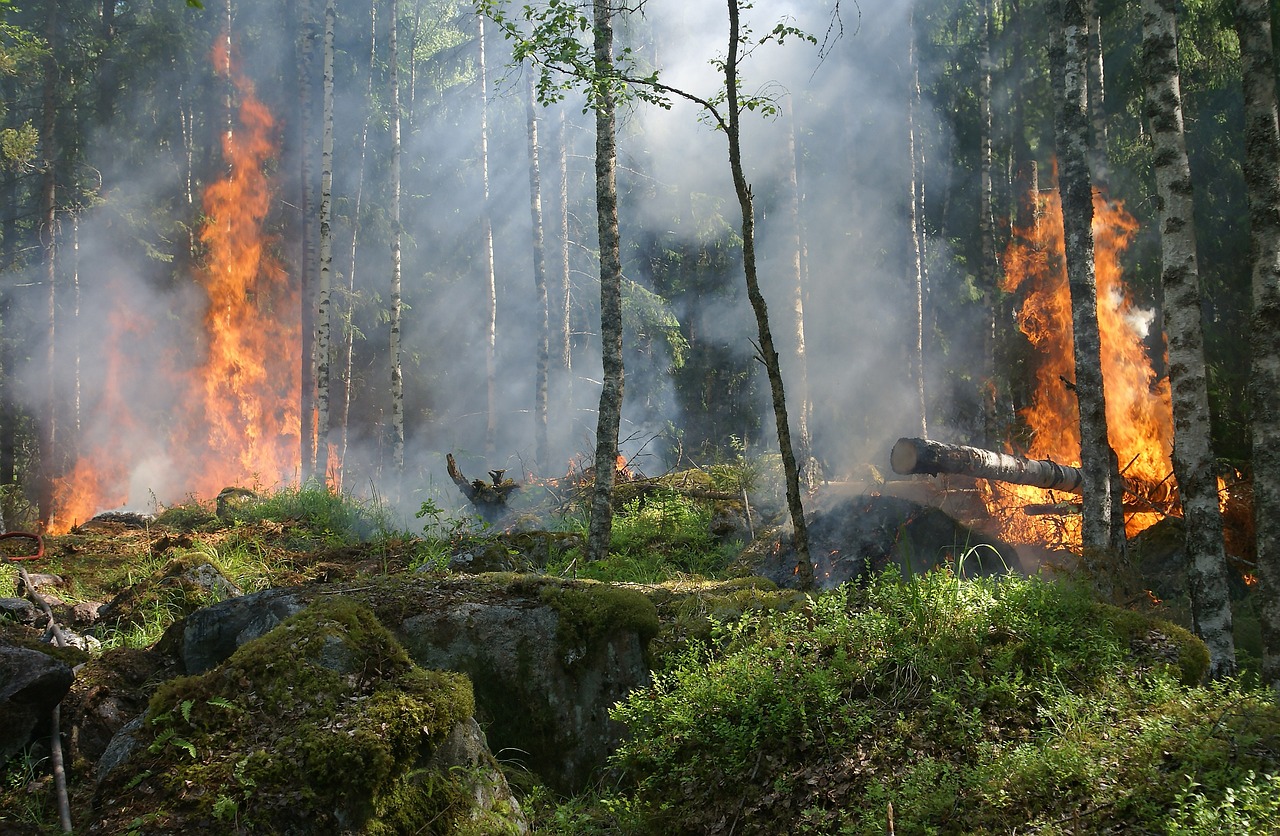Science Diplomacy for improving Natural Disaster Management

15 July 2023
Felipe Taylor Murta, Project Manager and Research Associate at The Lisbon Council
In recent years, Europe has experienced a range of adverse events that have impacted human lives, the environmental and cultural heritage. Scholars have long been emphasising that natural disasters are not simply natural occurrences, but rather a manifestation of systemic failure to effectively address the intricate interactions between society and the environment. With governments worldwide struggling to tackle the root causes, we can anticipate a rise in more severe events, heightened exposure, and increased vulnerability in the years to come.
Scientific expertise and knowledge play an important role in addressing this matter, learning from previous hazards, identifying best practices, and refining models for future disaster anticipation, for example. Hence, this context calls for a deeper implementation and promotion of science, technology, and innovation (STI) for understanding natural hazards, preparing, responding to, and monitoring their impacts. To reduce disaster risk, an improved science-policy interface is required as science should remain the basis for decision-making and identification of optimal strategies and countermeasures.
The link between STI and the policymaking in disaster reduction has become more evident in the context of the launch of the Sendai Framework for Disaster Reduction (SFDRR), the first major international agreement with concrete actions to deal with risk of disaster. In the European context, although the European Commission is not a signatory of SFDRR, it played an important role in promoting negotiations and supporting third countries in adopting the framework, whilst the European block opted for the advancement of the EU Civil Protection Mechanism – which is closely linked to the SFDRR.
Natural disasters are taking place around the globe and know no geopolitical borders, which underscores the need for transnational cooperation and collaborative solutions. Against this backdrop, science diplomacy for disaster management, henceforth referred to as “disaster diplomacy”, presents an opportunity for knowledge exchange by incorporating collaboration across regional, institutional, cultural, and disciplinary sectors. It covers a plethora of scientific areas, spanning from natural, medical, and environmental to economic, social, humanities, art, law, and engineering sciences, both in their scientific and technical natures.
Disaster Diplomacy
Disaster diplomacy is an emerging theme within science diplomacy that takes an approach to enhance disaster resilience concomitantly fostering internal cooperation and conflict reduction by combining the efforts led by governments, scientists, and non-academic disaster practitioners.
Science diplomacy can take place in three different ways, separately or concomitantly:
- Diplomacy for science: use diplomatic actions to facilitate international scientific collaboration;
- Science for diplomacy: use science as a soft power to advance diplomatic objectives;
- Science in diplomacy: directly support diplomatic processes through science.
Disaster diplomacy can therefore assume any of the aforementioned forms, encompassing all disaster management phases, namely prevention and mitigation, preparedness, and response and recovery.
Most of the studies on disaster diplomacy address the “response and recovery” action, as adverse events often inspire humanitarian assistance and reinforce diplomatic efforts, even amongst states with complex diplomatic situations. It was the case, for instance, of the break in decades of tension between Turkey and Greece as a large earthquake struck in both countries in 1999 and motivated collaborative response and recovery actions.
“Prevention and mitigation” is the phase targeting the minimization or preferably elimination of disaster risk, including vulnerability evaluation and impacts assessment. An intriguing illustration of disaster diplomacy can be seen in the case of the US and Cuba, despite their historically complex diplomatic relations. These nations have come together to collaborate on storm prediction, forecasting, and modeling as part of their efforts to enhance preparedness and mitigate the impact of natural disasters. Recognising that both countries are susceptible to severe hurricanes and other weather-related hazards, they have set aside their differences for the common goal of improving readiness.
“Preparation” actions refer to enhancing communities’ abilities to withstand disaster, which can be done through academic exchanges, for instance. It is the case of the scientific cooperation between Russia and Norway on annual collaborative search-and-rescue and oil spill preparation exercises.
Disaster diplomacy can thus assume different forms and promote cooperation even between States that have diplomatic issues, weather for short or long periods. In the European case, as States are more bound to cooperate and lead technocratic policy actions, disaster diplomacy is expected to work better. The issues in that sense, however, stem rather from the difficulty in establishing a fully operational science-policy interface from the national level that could corroborate with international cooperation as well.
Barriers in advancing science-policy interface for disaster management and disaster diplomacy
The science-policy interface in Europe for disaster risk reduction has been facing considerable issues, as concluded by the project “Enhancing Synergies for Disaster Prevention in the European Union” (ESPREssO). It encompasses epistemological, institutional, and strategic gaps that impact on the knowledge transfer capacities, the channelling of disaster expertise and the dissemination of risk awareness.
In terms of knowledge transfer, as science rests on basis of uncertainty, translating knowledge to clear-cut policy recommendations is a hard process, in addition to the institutional failure of having structures dedicated to it. Also, the lack of a common strategy impedes the successful knowledge transfer across sectors, constraining it to take place within sectors and ad hoc. As for channelling the disaster expertise, the lack of platforms and arenas to for the exchange of best practices between scientists, practitioners, and policymakers creates an institutional gap for better science-policy interface. Finally, concerning the risk awareness, there are epistemological complications when it comes to the existence of specialised terminology, which hinders communication with the policy domain, in addition to generating communication issues between scientists and the general public in the identification of needs.
The hindering factors to advance science-policy interface also create a gap in the successful implementation of disaster diplomacy, as political priorities in this sense are not well defined and often lack a clear scientific basis. Additionally, the knowledge gap between Member States of the European Union impacts the balanced preparedness of the common framework of the block.
TEMA is advancing disaster diplomacy in the European Union
TEMA focuses on the improvement of natural disaster management by automating precise semantic 3D mapping and disaster evolution prediction. The project is being carried out by 19 partners from different countries across the EU, encompassing different types of stakeholders (academia, private and public) in the process.
By corroborating international cooperation on research, TEMA´s tools and results will be able to foster science-based action and easier integration of data across the EU. Whilst TEMA comes from an outstanding type of “diplomacy for science”, it now has the opportunity to lead to “science for diplomacy” in disaster management by providing a scalable platform to provide natural disaster management support based on extreme data analytics.

